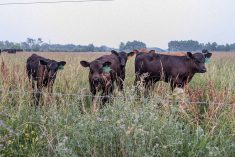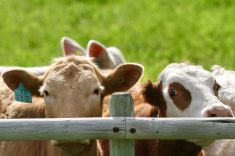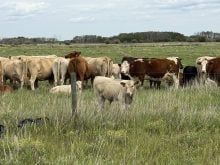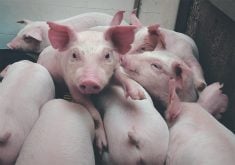RED DEER, Alta. – Last fall Triple 7 Ranches received 22,000 calves and almost all of them were bawling for their mothers.
As owners of a backgrounding lot near Ponoka, Alta., Miles and Joyce Crandall say a calf’s ability to thrive is determined within 14 days of its arrival at the feedlot.
Miles agrees with experts who say weaning is one of the most stressful events in a calf’s life. Receiving young animals with no documentation makes his job even tougher.
At the Triple 7, about 10,000 calves arrived last November. Some had traveled long distances and were tired and dehydrated. Others were sick when they got off the trucks, some were thin, some still had horns and others were not properly castrated.
Read Also
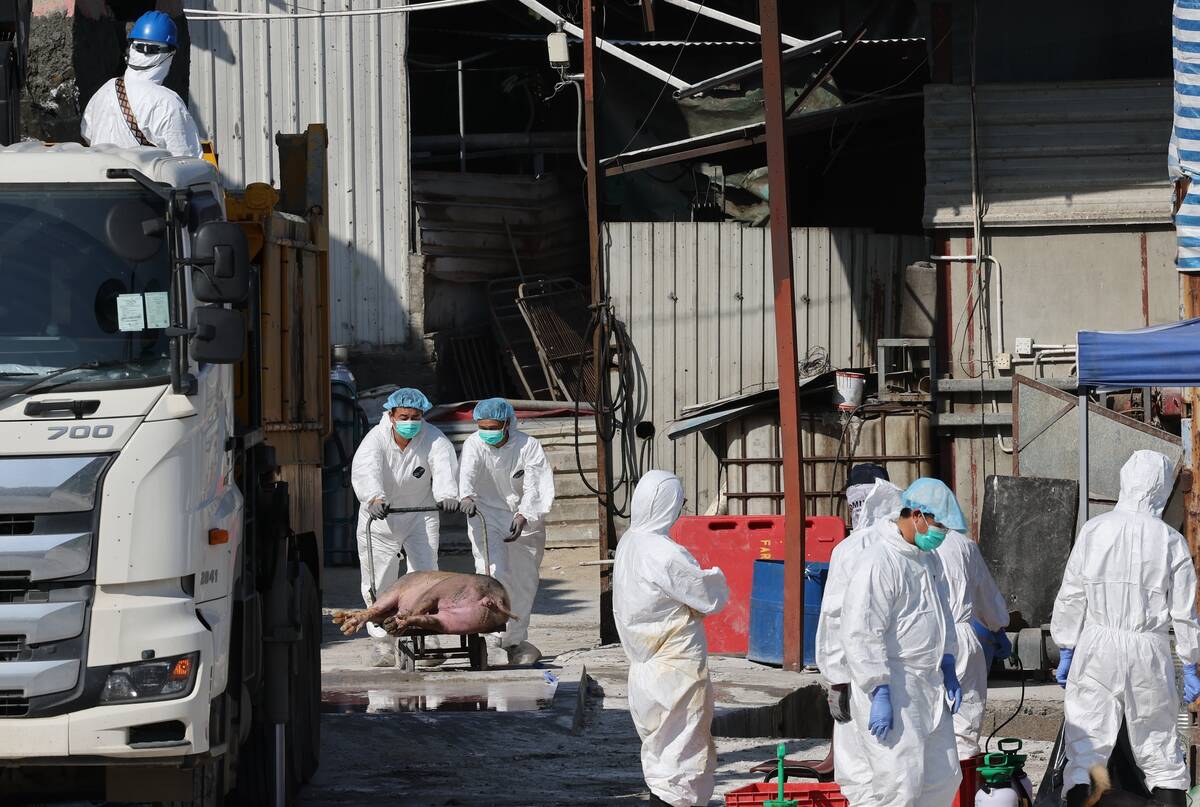
Mixed results on new African swine fever vaccine
The new African swine fever vaccine still has issues, but also gave researchers insight into how virus strain impacts protection against the deadly pig disease.
To get these calves into better shape, Triple 7 Ranches established a written herd health program.
The cattle pens are clean and hospital facilities are always ready. All cattle get a shot of antibiotics when entering the lot to build better defences against illness.
Sick animals cost the Crandalls in medicine, slow growth and extra food and labor.
Miles Crandall said autopsies on every dead animal can save the ranch money by identifying problems so more deaths are avoided.
Al Schaefer, an Agriculture Canada specialist in animal behavior, and John Grinde, a Bluffton, Alta. cow/calf producer, understand Crandall’s point.
Schaefer said a calf finds weaning stressful because not only is it taken from its mother, but it also gets inoculated, castrated, dehorned, dewormed and implanted with growth hormones within a day.
Calves are then shipped to a feedlot or backgrounding lot, mixed with animals strange to them and introduced to new food.
The stress shows up in increased heart rate and respiratory problems. Young animals lose energy, become dehydrated and experience muscle degradation because of stress. It takes them about 10 days to recover from the shock.
It also upsets them psychologically.
“The psychological effects have more impact than we ever give them credit for,” said Schaefer.
Cattle often receive vaccinations or a shot of antibiotics when they arrive at a feedlot. This exacerbates problems because the injections leave them feeling sore and they may react with a fever.
There are several strategies to ease calves into a new environment:
- Calves arriving at a lot could receive rations of hay and grain to give their rumens time to adjust. Starting them on a high energy diet immediately might make them sick.
- Another approach is soft weaning. Some research shows that leaving a few barren cows or an older steer with young calves calms them in early days of weaning.
- Other stock producers try interval weaning where about one fifth of the cows are removed at a time. Weaning takes place over five days and in follow-up studies, calves show fewer problems with reduced immunity, pacing or bawling.
- Preconditioning calves before shipping helps. About three weeks before weaning, calves can start training to eat from a feed bunk with lower energy rations that include hay. An American study showed preconditioned calves experience less sickness and better weight gains.
John Grinde, a veterinarian, offered these observations:
- Calves that had a difficult birth often experience stress later.
- Persistently infected animals tend to be sick in the feedlot and may die there.
- Problems like scours early in life can continue to plague animals afterward.
He said calves should be preconditioned prior to weaning and receive booster shots at weaning.
“It’s more work but when they go to the feedlot they require less handling,” said Grinde.





